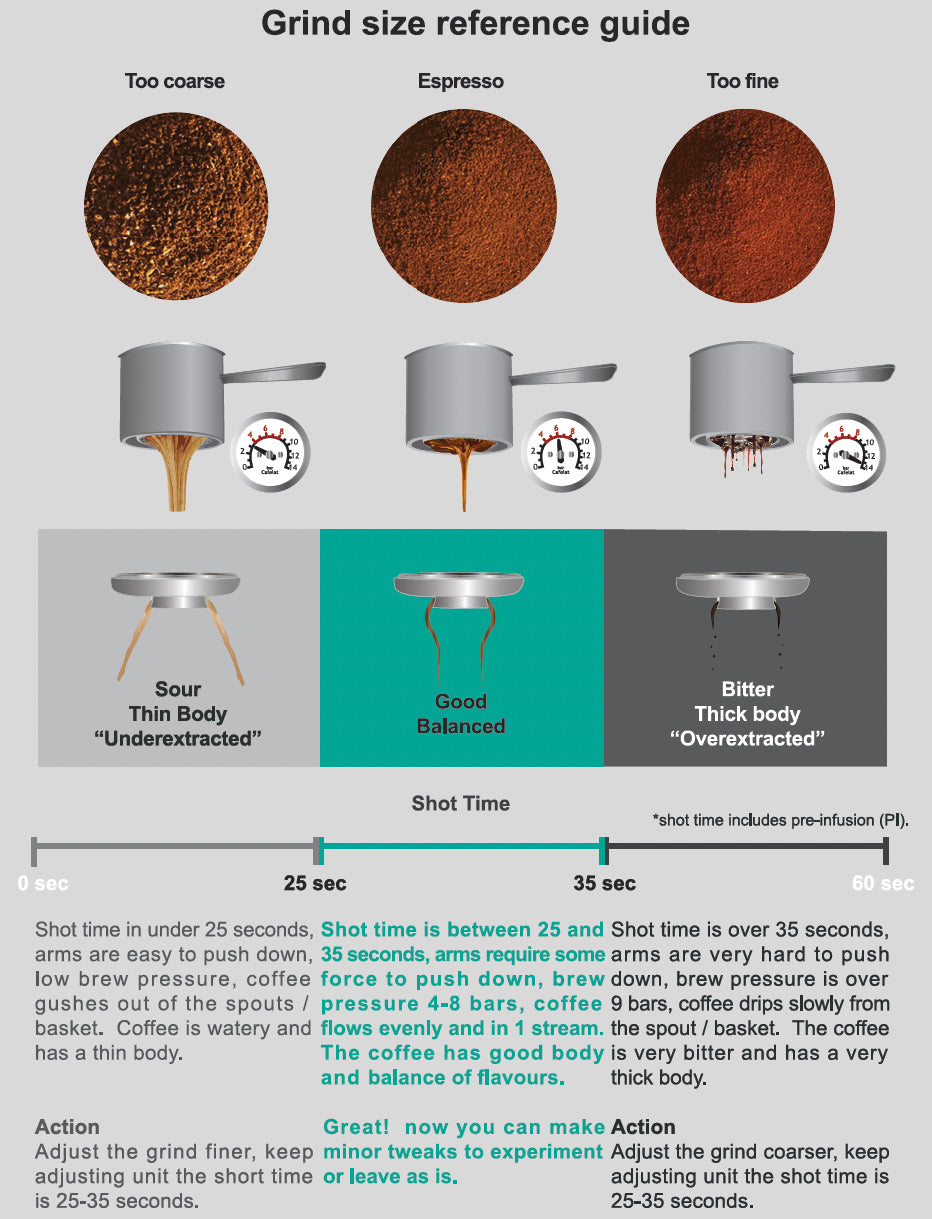How to Time Espresso Extraction
As a home barista, mastering espresso extraction timing is crucial for elevating your coffee experience. The key to an excellent espresso lies in balancing the timing, grind size, and flow of extraction. Initially, the process can seem complex, but once you understand its intricacies, it becomes a rewarding part of brewing the perfect shot.
Why Timing Matters in Espresso Extraction
Timing plays a vital role in the consistency and flavor of espresso. It controls how much flavor is drawn from the coffee grounds. Extract too quickly, and the shot will be under-extracted, tasting sour and lacking body. On the other hand, over-extraction occurs when the process takes too long, leading to bitterness and an unpleasant aftertaste.

Two Methods to Time Your Espresso Extraction
There are two popular ways to time your espresso extraction: either start the timer when the pump activates or when the first drip of espresso hits the cup. Starting the timer when you press the espresso button is ideal because it accounts for pre-infusion, making your results more consistent.
Ideal Extraction Time for Espresso
Typically, espresso extraction should take between 25 and 35 seconds. Aiming for around 30 seconds usually produces a balanced shot. If your shot pulls in under 25 seconds, it is likely under-extracted and may taste weak or sour. Shots that take over 35 seconds tend to be over-extracted, resulting in a bitter taste.
Adjusting the Grind Size for Optimal Timing
The grind size directly impacts extraction time. A finer grind slows down the process, while a coarser grind speeds it up. If your espresso is extracting too quickly (under 25 seconds), try a finer grind. If it's extracting too slowly (over 35 seconds), opt for a coarser grind. Finding the perfect grind size is essential for hitting that ideal extraction time.
Evaluating Your Espresso: Timing Isn’t Everything
While timing is critical, taste ultimately guides the quality of your espresso. A well-extracted shot should have a balance of sweetness, acidity, and body. If your espresso tastes sour and thin, it’s under-extracted, and you may need a finer grind. Conversely, if it tastes bitter and dry, it’s over-extracted, requiring a coarser grind or shorter extraction time.
Troubleshooting Espresso Extraction Issues
Here are some common extraction issues and fixes:
- Under-extraction: If the shot pulls too fast (under 25 seconds) and tastes sour, the grind is likely too coarse. Grind finer to improve the shot.
- Over-extraction: If the shot takes too long (over 35 seconds) and tastes bitter, the grind is too fine. Adjust by grinding coarser.
The Impact of Pre-Infusion on Extraction Timing
Pre-infusion is when water sits on the coffee grounds before applying full pressure. It can affect your overall extraction time. Machines with a pre-infusion feature deliver more consistent results. If your machine lacks this feature, you can manually simulate it by briefly starting and stopping the pump.

Experimenting with Brew Ratios
The brew ratio, or the ratio between coffee grounds and liquid espresso, is another factor that influences espresso extraction. A common starting point is a 1:2 ratio, such as 18 grams of coffee producing 36 grams of espresso. Experimenting with different ratios can enhance flavors. Lighter roasts may benefit from a longer extraction or lower ratio (1:2.5), while darker roasts are best suited for a 1:2 ratio to reduce bitterness and retain body.
The Importance of Tasting and Sensory Evaluation
Ultimately, taste is the final judge. While timing offers a solid framework, your palate determines if the shot is perfect. Sometimes, even a shot pulled within the ideal 30-second window may need adjustments to the grind or brew ratio for optimal flavor. By refining these elements, you can consistently achieve delicious espresso.
Conclusion
Mastering espresso extraction timing is a process that demands practice and attention to detail. By fine-tuning your timing, adjusting grind size, and paying close attention to taste, you can consistently pull exceptional espresso shots. With patience and experimentation, you’ll soon become adept at making café-quality espresso at home.
